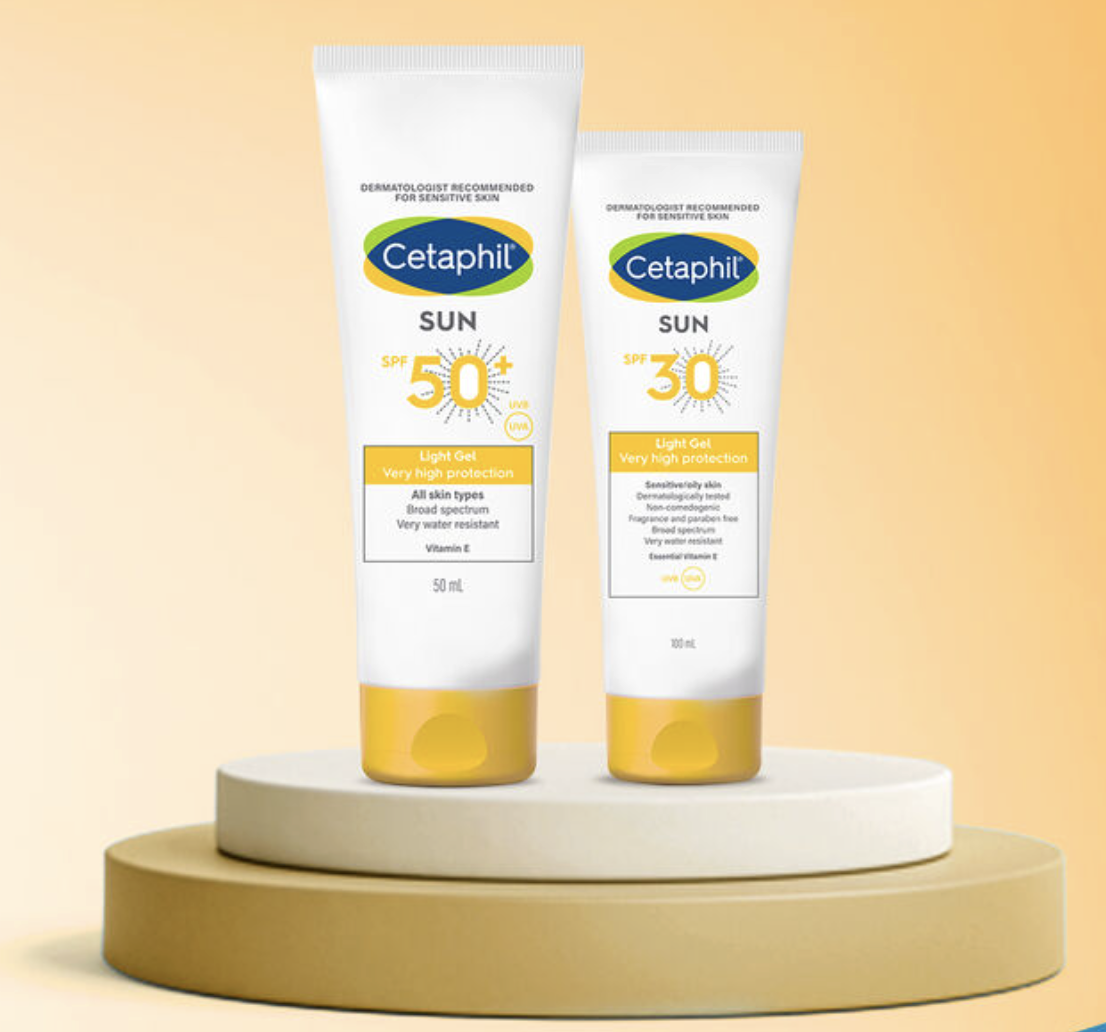
Understand the different types of sunscreen
Did you know there are two fundamentally different ways sunscreens can protect your skin? Just saying "sunscreen" isn’t enough; you need to know which type of sunscreen suits your skin, lifestyle, and environment. Choose wisely, and you’ll be armoring your skin against sun damage, premature aging, hyperpigmentation, and even skin cancer.
We will demystify the various forms of sunscreen, assist you in choosing the most suitable one together with your skin, the application, and when one should apply it, besides the many known myths of SPF in this exhaustive guide. Regardless of whether you are going to the beach or staying at home, you will discover what kind of sunscreen you should use in your day-to-day life.

What Are the Main Types of Sunscreen?
When it comes to sun protection, one type does not fit all. Your choice hinges on three key factors:
- How the sunscreen work, chemical or physical
- Your skin type and personal preferences
- Your daily activities and environment
Let’s explore the two primary types of sunscreen you’ll find on the market:
Chemical Sunscreens
- Contain organic filters like avobenzone, octinoxate, and oxybenzone
- These absorb UV radiation, convert it into heat, and then release it
- Lightweight, invisible on skin, perfect if you wear makeup
- Requires 20 minutes to activate
- May irritate sensitive skin; patch-test first
Physical (Mineral) Sunscreens
- Mineral filters like zinc oxide and titanium dioxide
- Sit on the skin, reflecting and scattering UV rays
- Offer immediate protection and tend to be gentler
- May leave a white cast, especially on darker skin
- Ideal for sensitive skin types, babies, and ecologically-conscious users
How to Choose Between Chemical and Physical Sunscreens
Sun Protection Factor (SPF) indicates UVB protection. For instance:
- SPF 30 blocks ~97% UVB
- SPF 50 blocks ~98% UVB
With UVA aging and UVB burning, you require a dermatologist-approved broad-spectrum sunscreen day after day, even when you are inside the house, or it is cloudy. It avoids tanning, pigging, and collagen destruction as well as reduces the risk of skin cancer. Just imagine you have an invisible shield to protect your skin from the harmful sun rays and wear SPF every day.
Where to Apply Sunscreen for Maximum Effectiveness
Your ideal sunscreen depends on two things: your skin type and how you spend your time.
Skin Type Considerations
- Sensitive or rosacea-prone skin: Opt for fragrance-free mineral sunscreens (Zinc oxide or Titanium dioxide)
- Oily or acne-prone skin: Choose mattifying chemical or hybrid sunscreens, like Cetaphil Sun SPF 50+ Light Gel
- Dry or mature skin: Cream formulas with hyaluronic acid work well in either kind
- Darker skin tones: Mineral sunscreens may leave a white cast; choose tinted or chemical versions
Activity and Environment
- Outdoor sports or seaside: Always go for water-resistant, broad-spectrum sunscreen
- High UV exposure (e.g., skiing, beach): Higher SPF, ideally with mineral filters for UVA protection
- Daily commuting: Lightweight, fragrance-free sunscreen works best
How to Choose the Right Sunscreen for Your Skin Type
Sunscreen only works if it’s on every exposed area.
- Face & neck: Cover under the chin and along the hairline
- Arms and hands: Include tops and under-fingers
- Legs and feet: Especially shins and tops of toes
- Ears and scalp: Use sprays or powders if bald or thinning
- Hands: SPF creams should be reapplied after washing
When and How to Apply Sunscreen Correctly
Timing Your Application
- Apply 20 minutes before sun exposure
- Reapply every two hours or after swimming/sweating
- Even indoors, apply SPF UVA that penetrates glass
Application Techniques
- Use a nickel-sized amount for the face; a teaspoon for each limb
- Apply while skin is slightly damp for better absorption
- Layer under makeup or moisturiser, never mix
Why SPF Rating Matters in Sunscreen Selection
Understanding SPF Levels
- SPF 15 blocks 93% UVB; SPF 30 blocks 97%; SPF 50 blocks 98%
- Every SPF increase doesn’t double protection
Myths vs. Facts About SPF
- Myth: "I don’t need SPF indoors." Fact: UVA penetrates windows
- Myth: "One application lasts all day." Fact: Reapply every two hours
- Myth: "Higher SPF is always better." Fact: SPF 30–50 is sufficient. SPF 100 offers minimal extra protection
Conclusion
Between physical and chemical sunscreen, it is your skin sensitivity level, texture, tone, and lifestyle that would help you come to a decision. The number-one sunscreen is the kind that will suit your skin and preferences. In case your skin is oily or prone to acne, or you require a tinted or invisible finish, lightweight chemical sunscreens, such as Cetaphil Sun SPF 50+ Light Gel, work best.
When your skin is sensitive or you want reef-safe sunscreen, then use mineral sunscreens containing zinc oxide.
Remember:
- Cover every exposed area
- Reapply regularly
- Choose broad-spectrum SPF 30+
- Match the product to your skin type
Make sun protection an everyday habit and let your sunscreen work harder, rain or shine.
FAQs
What is the difference between broad-spectrum and regular sunscreen?
Any sun protection from broad-spectrum sunscreens guards against UVA and UVB radiation. UVA ultraviolet light is a premature ageing light, whereas UVB is a sunburn light. The normal sunscreens could just block UVB. To minimize the dangers of skin cancer and pigmentation by having full protection from the sun, dermatologists advise every person to put on a broad-spectrum sunscreen, no matter the weather, every time.
Can I use sunscreen on babies and young children?
Infants below 6 months should avoid the sun and should be provided with protective clothing; they should not be exposed to direct sunlight. Older babies (above 6 months) and small children have sensitive skin, so apply mineral-based sunscreens containing zinc oxide or titanium dioxide because they are gentle to sensitive areas and do not irritate.
Is there a sunscreen for sensitive skin?
Yes, sensitive skins respond to fragrance-free, hypoallergenic sunscreen formulas that contain minerals such as zinc oxide or titanium dioxide. These have fewer chances of irritation or breakouts. It does not contain alcohol, parabens, or preservatives. Sheer Mineral Sunscreen provided by Cetaphil is a good, dermatologically tested product when it comes to treating individuals with easily irritated or red skin.
How often should sunscreen be reapplied during the day?
Water-resistant sunscreen should be reapplied every 2 hours, or after you finish sweating, swimming, or towel drying, regardless. Reapplication plays a vital role in prolonging the effect in case you are exposed to the open air all the time. In case of indoor application, you need to reapply it after every four hours or six hours, especially in case you are seated by a window where rays may reach through the window.
Are there sunscreens suitable for acne-prone skin?
Yes, an oil-free sunscreen that does not block the pores is needed for acne-prone skin. Seek out light fluid gel formulations of a matte finish with SPF 30 +. Do not use oily or greasy sunscreen or those containing high amounts of alcohol. Sun protection and acne-prone skin, Cetaphil Sun SPF 50+ Light Gel, is a gel developed by Cetaphil, specifically for use by those with acne and oily skin because it protects appropriately against sun exposure, and it does not cause breakouts.




